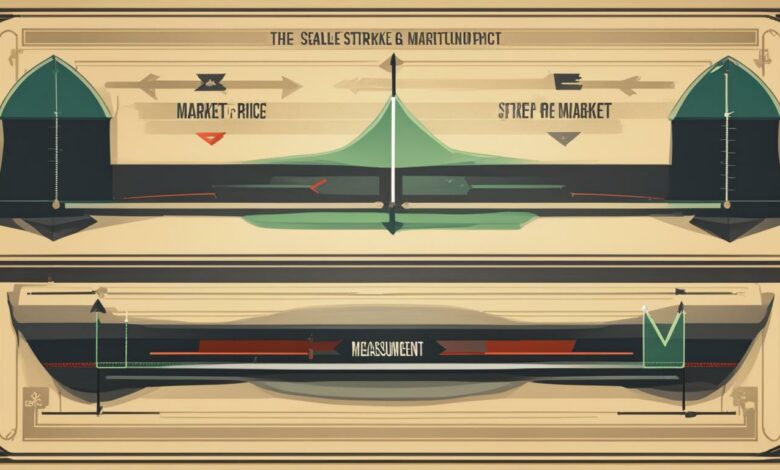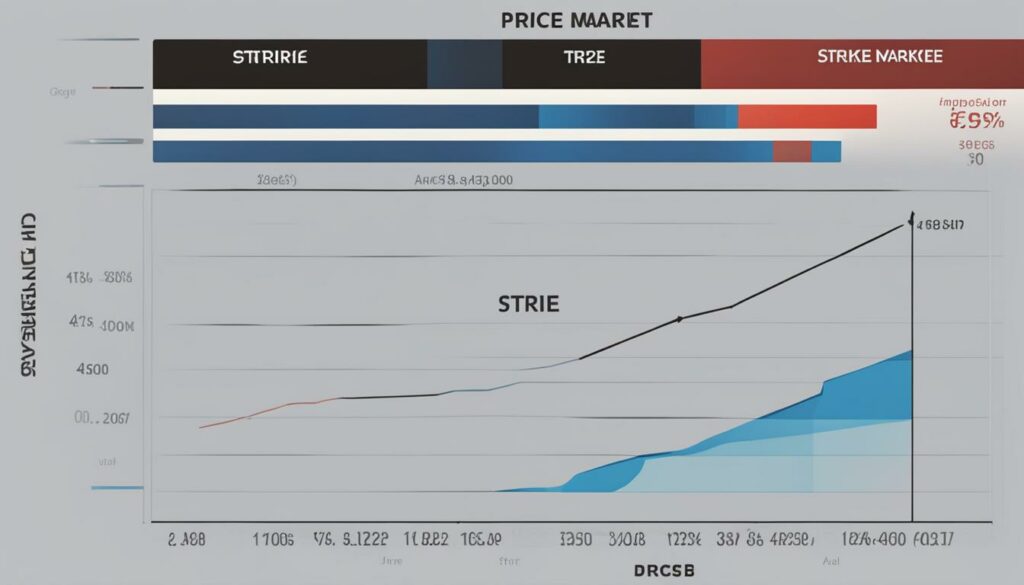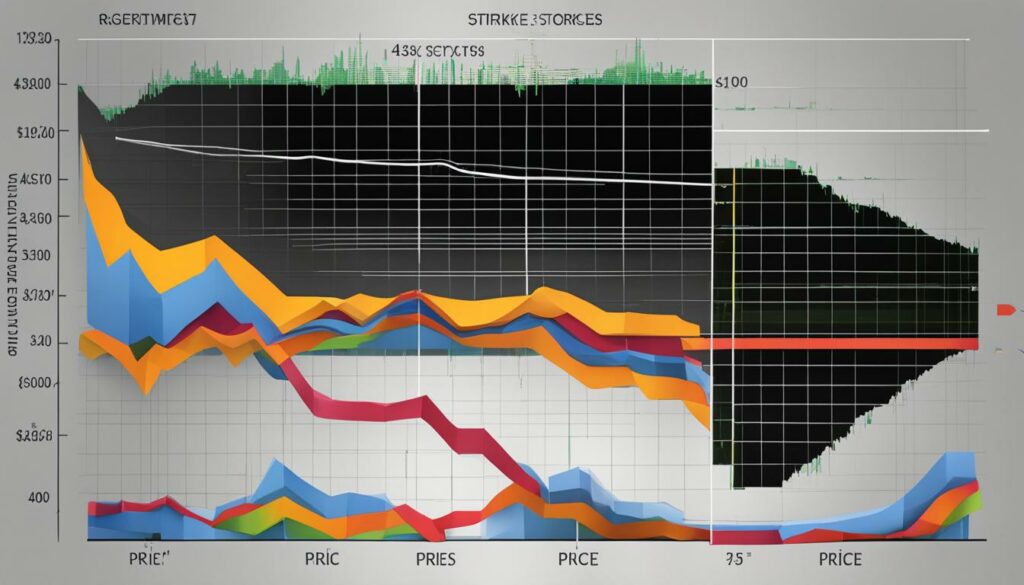Market Price Vs Strike Price: What Is The Difference?

In options trading, understanding the concepts of market price and strike price is crucial. These two terms play a significant role in determining the value and profitability of options contracts. Let’s delve into the key differences between market price and strike price, and how they impact options trading.
Key Takeaways:
- The strike price is the pre-specified price at which the option buyer and seller agree to buy or sell the underlying security.
- The market price is the current price at which the security is trading in the market.
- The difference between the strike price and the market price determines an option’s “in-the-money” or “out-of-the-money” status.
- In-the-money options have intrinsic value, while out-of-the-money options have only extrinsic value.
- The strike price remains constant throughout the life of the option contract.
Understanding the financial market’s lexicon is crucial for investors, especially when differentiating between terms like “market price” and “strike price.” These terms, often interchanged by new investors, play unique roles in trading and investment strategies. Let’s delve into these concepts to demystify their differences and significance in the financial world.
The Essence of Market Price
Market price is the current rate at which an asset or service is traded in the market. Governed by supply and demand dynamics, it represents the equilibrium where the quantity supplied matches the quantity demanded. This price is not static; it fluctuates in response to various factors, including market trends, the number of suppliers and buyers, and external influences like economic news or geopolitical developments.
Decoding the Strike Price
In contrast, strike price, or the exercise price, is a cornerstone of options trading. It’s the pre-established price set in an options contract, where the option holder can buy (in a call option) or sell (in a put option) the underlying asset before the contract’s expiration. This price is fixed and determined based on several factors at the time of the contract’s initiation, such as the current market conditions, the asset’s volatility, and prevailing interest rates.

Distinguishing Market Price and Strike Price
- Foundational Differences:
- Market Price: The real-time trading price of an asset.
- Strike Price: The pre-set price for exercising an option.
- How They Are Determined:
- Market Price: Changes with supply and demand.
- Strike Price: Fixed at the options contract’s inception.
- Influencing Factors:
- Market Price: Impacted by external elements like economic data and market sentiment.
- Strike Price: Shaped by the asset’s volatility, interest rates, and market conditions at issue.
- Role in Trading Strategies:
- Market Price: Indicates the asset’s current trading value, influencing direct transaction costs.
- Strike Price: Sets a potential future transaction price for options traders.
- Value Dynamics:
- Market Price: May oscillate above or below the strike price, based on market trends.
- Strike Price: Remains constant, serving as a benchmark to assess an option’s profitability.
Illustrating with an Example
Consider a scenario where a stock is priced at $100 per share in the market. An investor holding a call option with a strike price of $110 possesses the right to purchase the stock at $110 before the option’s expiration. If the market price escalates above $110, the option becomes “in the money,” presenting a profitable opportunity for the investor. However, if the market price does not exceed $110, exercising the option might not be beneficial.
The Relationship Between Strike Price and the Underlying Security
In options trading, the relationship between the strike price and the underlying security is crucial. The strike price refers to the pre-specified price at which the option holder can buy or sell the underlying security. This price plays a significant role in determining the value of an option.
The closer the strike price is to the market price of the underlying security, the more valuable the option becomes. This relationship between the strike price and the market price is known as the moneyness of the option. In-the-money options have strike prices below the market price, while out-of-the-money options have strike prices above the market price. At-the-money options have strike prices equal to the market price.
The impact of the strike price on the option value is significant. In-the-money options, with strike prices below the market price, have higher premiums as the difference between the strike price and the underlying price decreases. This means that the option holder has a higher chance of making a profit. Conversely, out-of-the-money options, with strike prices above the market price, have lower premiums due to the increased difference between the strike and the underlying price. These options are considered riskier but may offer greater potential returns.
It’s important to note that the strike price is not the only factor affecting the value of an option. The time to expiration and the volatility of the underlying security also play a significant role. These factors, along with the relationship between the strike price and the underlying security, must be considered when evaluating and trading options.
| Option Type | Strike Price | Market Price | Option Value |
|---|---|---|---|
| In-the-money | Below market price | Above market price | Higher premium |
| Out-of-the-money | Above market price | Below market price | Lower premium |
| At-the-money | Equal to market price | Equal to market price | Variable premium |
Understanding the relationship between the strike price and the underlying security is essential for options traders. By analyzing the moneyness of options and considering the impact of the strike price on option value, traders can make informed decisions and maximize their potential profits.
Takeaway:
The strike price of an option determines its moneyness and affects the option’s value. In-the-money options have strike prices below the market price, while out-of-the-money options have strike prices above the market price. The closer the strike price is to the market price, the more valuable the option becomes. Other factors such as time to expiration and volatility also impact the option’s value.

Strike Price Example
To further illustrate the concept of strike prices, let’s consider an example involving a stock that is currently trading at $100. In this scenario, we will explore the implications of a call option and a put option with a strike price of $110.
- Call Option:
If the stock price rises above the $110 strike price, the call option would be considered “in-the-money.” This means that the option holder has the right to buy the underlying stock at a price lower than the market price. As the stock price continues to increase, the value of the call option also rises.However, it’s important to note that if the stock price never reaches $110 before the option’s expiration date, the call option will expire worthless, as there is no benefit in exercising the option to buy the stock at a higher price than its current market value.
- Put Option:
On the other hand, if the stock price falls below the $110 strike price, the put option would be considered “in-the-money.” This grants the option holder the right to sell the underlying stock at a price higher than its market value. Selling the stock at a higher price than its market value allows the put option holder to make a profit.
As seen in this example, strike prices play a crucial role in determining whether an option is profitable or not. It is essential to consider the relationship between the strike price and the current market price when evaluating options for potential investment.

Desirability of Strike Prices and Exercise Prices
The selection of strike prices is an essential aspect of options trading, and the desirability of these prices varies depending on factors such as an investor’s risk tolerance and the prevailing options premiums in the market.
For some investors, strike prices that are close to the current market price are desirable. These strike prices have a higher probability of being exercised at a profit. By selecting strike prices near the market price, investors can benefit from immediate gains if the underlying security moves favorably.
However, other investors may seek out out-of-the-money options with more distant strike prices. While these options are less likely to be exercised, their desirability lies in the potential for earning larger returns. These investors are willing to take on a higher level of risk in exchange for the possibility of significant profits.
It is important to note that strike prices are also referred to as exercise prices, as they indicate the price at which the option can be exercised. When traders are selecting options, they carefully consider the strike price along with the implied volatility of the underlying asset. This combination helps them assess the potential profitability and risk associated with a particular options contract.
Conclusion: The Significance of Understanding Both
For investors, particularly those engaged in options trading, comprehending the distinction between market price and strike price is vital. The market price mirrors the asset’s current value, fluctuating with the market’s ebb and flow. In contrast, the strike price is a steadfast reference that guides options traders in strategizing. Grasping these concepts empowers investors to more confidently navigate the financial markets and make informed decisions.
By clearly differentiating these terms, we aim to enhance your understanding and enable more strategic investment choices. Remember, in the realm of financial trading, knowledge is as valuable as the assets themselves.
Being aware of strike prices is vital for success in options trading. Next, let’s explore the relationship between strike prices and the underlying security to gain further insights into the world of options trading.







